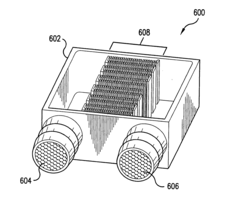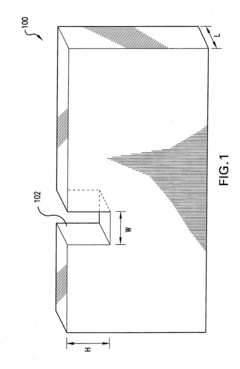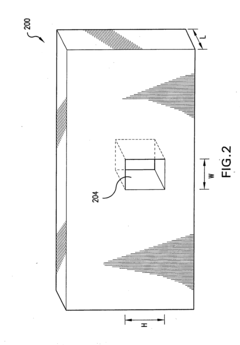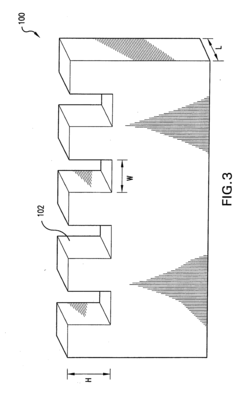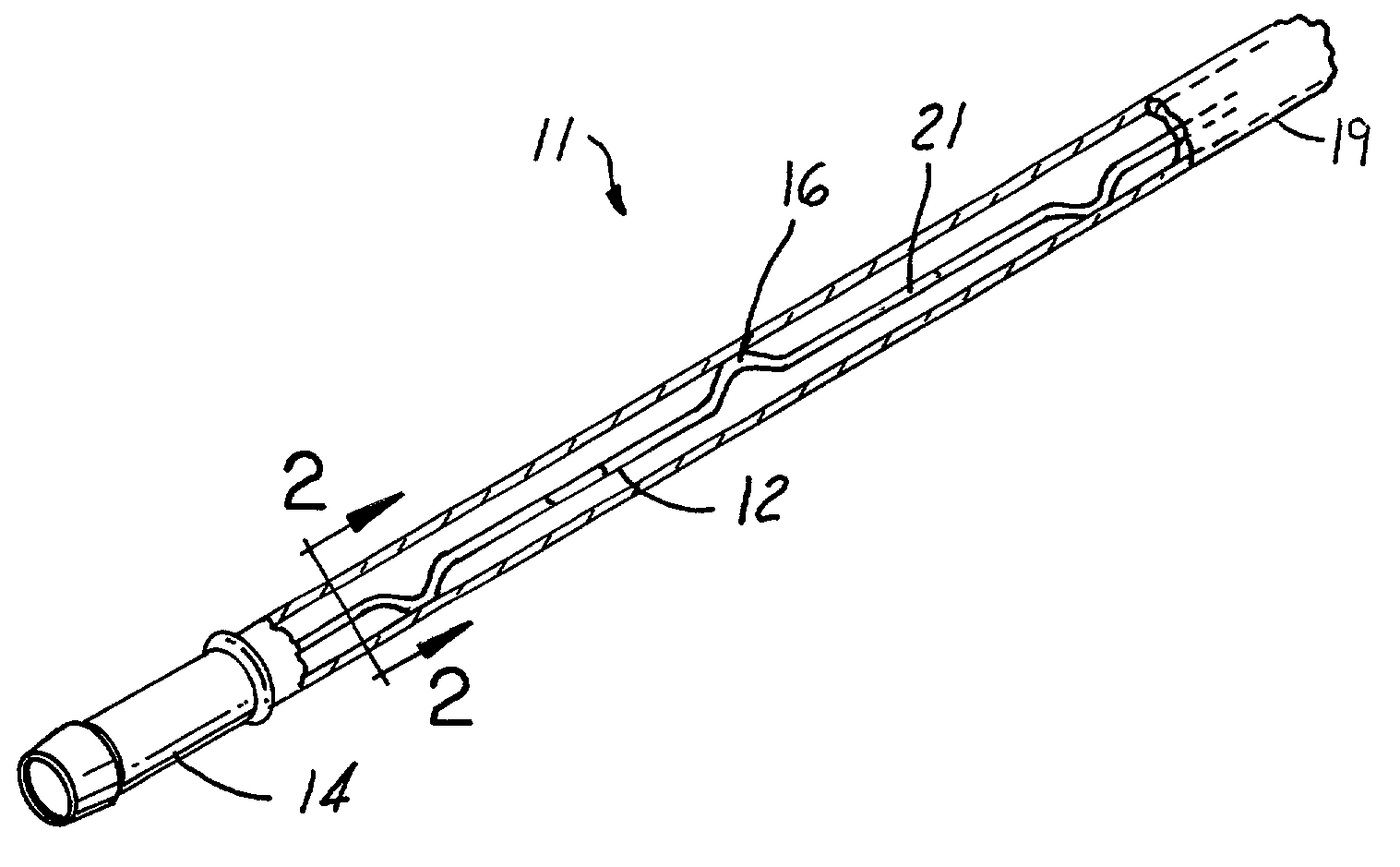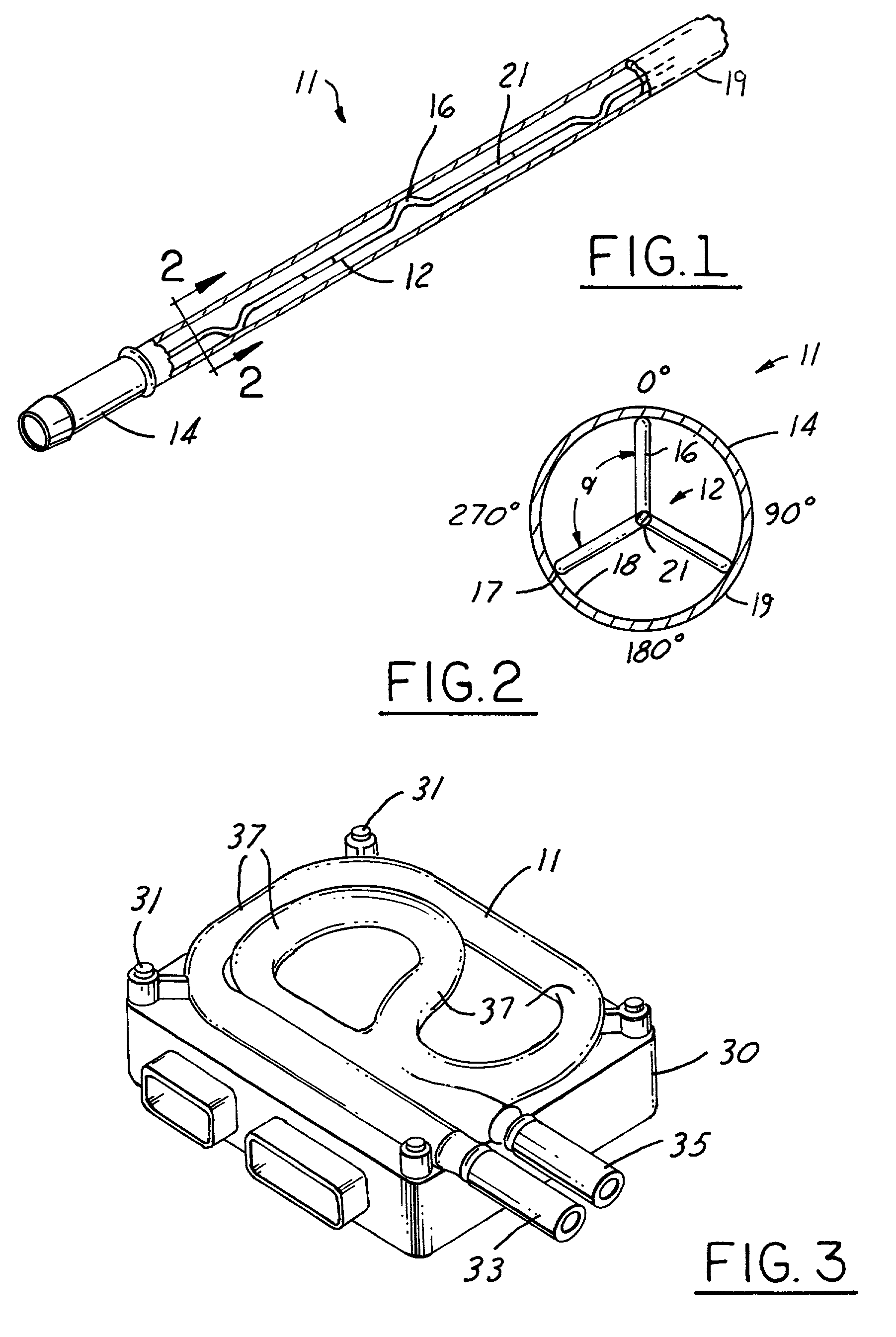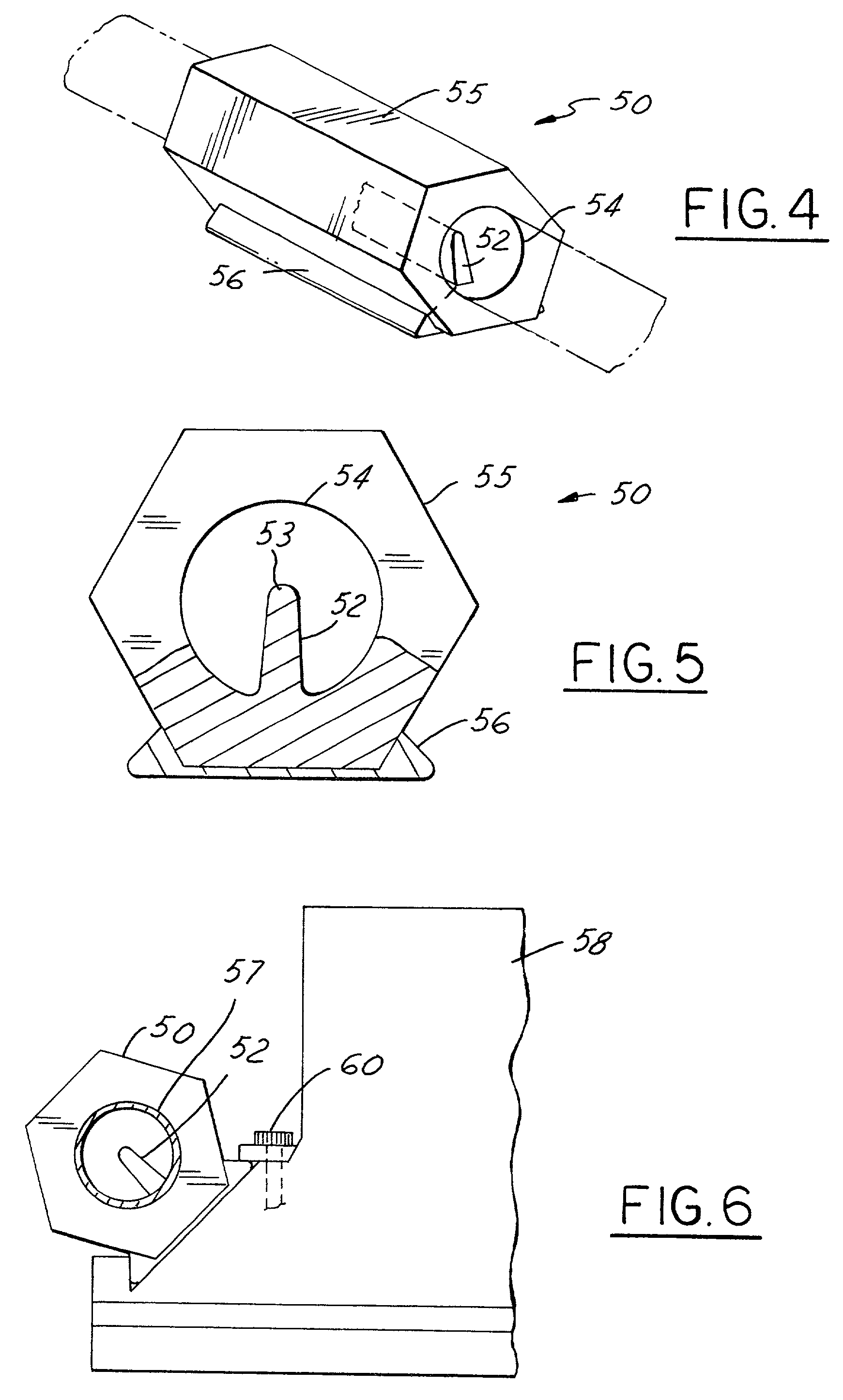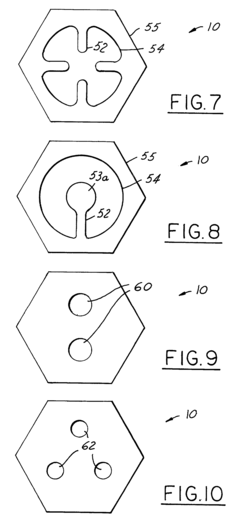Laminar Flow Applications in Electronic Cooling Systems
JUL 10, 20259 MIN READ
Generate Your Research Report Instantly with AI Agent
Patsnap Eureka helps you evaluate technical feasibility & market potential.
Laminar Flow Cooling Evolution and Objectives
Laminar flow cooling has emerged as a critical technology in electronic thermal management, evolving significantly over the past few decades. This cooling method, which relies on the smooth, predictable flow of fluids, has become increasingly important as electronic devices have grown more powerful and compact.
The evolution of laminar flow cooling in electronic systems can be traced back to the 1960s when the first integrated circuits were developed. Initially, air cooling was sufficient for most applications. However, as transistor density increased and power consumption rose, more efficient cooling methods became necessary. In the 1980s and 1990s, researchers began exploring liquid cooling techniques, including laminar flow systems, to address the growing thermal challenges in electronics.
The objectives of laminar flow cooling in electronic systems have consistently focused on improving heat dissipation efficiency while minimizing energy consumption and system complexity. One primary goal has been to maximize the heat transfer coefficient between the cooling fluid and the electronic components. This has led to the development of various channel designs and surface treatments to enhance thermal conductivity without disrupting the laminar flow regime.
Another key objective has been to reduce pumping power requirements. Laminar flow, by its nature, requires less energy to maintain than turbulent flow. However, researchers have continually sought to optimize channel geometries and fluid properties to further minimize the energy needed for circulation while maintaining effective cooling performance.
Miniaturization has been a driving force in the evolution of laminar flow cooling. As electronic devices have shrunk, so too have the cooling channels. This has led to the development of microfluidic cooling systems, where laminar flow principles are applied at the microscale. The objective here has been to integrate cooling directly into chip packages, enabling more efficient heat removal from the source.
Recent objectives in laminar flow cooling research have focused on addressing the non-uniform heat distribution in modern electronic systems. Techniques such as variable channel cross-sections and smart fluid routing have been explored to target hotspots more effectively. Additionally, there has been a push towards developing adaptive cooling systems that can adjust flow rates and patterns in real-time based on the dynamic thermal loads of electronic components.
Looking forward, the objectives of laminar flow cooling in electronic systems are likely to include further integration with emerging technologies such as 3D chip stacking and flexible electronics. There is also a growing emphasis on sustainability, with objectives aimed at developing cooling solutions that are not only efficient but also environmentally friendly, using biodegradable or recyclable coolants and materials.
The evolution of laminar flow cooling in electronic systems can be traced back to the 1960s when the first integrated circuits were developed. Initially, air cooling was sufficient for most applications. However, as transistor density increased and power consumption rose, more efficient cooling methods became necessary. In the 1980s and 1990s, researchers began exploring liquid cooling techniques, including laminar flow systems, to address the growing thermal challenges in electronics.
The objectives of laminar flow cooling in electronic systems have consistently focused on improving heat dissipation efficiency while minimizing energy consumption and system complexity. One primary goal has been to maximize the heat transfer coefficient between the cooling fluid and the electronic components. This has led to the development of various channel designs and surface treatments to enhance thermal conductivity without disrupting the laminar flow regime.
Another key objective has been to reduce pumping power requirements. Laminar flow, by its nature, requires less energy to maintain than turbulent flow. However, researchers have continually sought to optimize channel geometries and fluid properties to further minimize the energy needed for circulation while maintaining effective cooling performance.
Miniaturization has been a driving force in the evolution of laminar flow cooling. As electronic devices have shrunk, so too have the cooling channels. This has led to the development of microfluidic cooling systems, where laminar flow principles are applied at the microscale. The objective here has been to integrate cooling directly into chip packages, enabling more efficient heat removal from the source.
Recent objectives in laminar flow cooling research have focused on addressing the non-uniform heat distribution in modern electronic systems. Techniques such as variable channel cross-sections and smart fluid routing have been explored to target hotspots more effectively. Additionally, there has been a push towards developing adaptive cooling systems that can adjust flow rates and patterns in real-time based on the dynamic thermal loads of electronic components.
Looking forward, the objectives of laminar flow cooling in electronic systems are likely to include further integration with emerging technologies such as 3D chip stacking and flexible electronics. There is also a growing emphasis on sustainability, with objectives aimed at developing cooling solutions that are not only efficient but also environmentally friendly, using biodegradable or recyclable coolants and materials.
Electronic Cooling Market Analysis
The electronic cooling market has experienced significant growth in recent years, driven by the increasing demand for thermal management solutions in various electronic devices and systems. This market encompasses a wide range of products and technologies designed to dissipate heat and maintain optimal operating temperatures for electronic components.
The global electronic cooling market is projected to continue its upward trajectory, with a compound annual growth rate (CAGR) expected to remain strong over the next five years. This growth is primarily attributed to the rapid advancement of electronic devices, the miniaturization of components, and the increasing power density of modern electronics.
Key factors driving the market include the rising adoption of advanced cooling solutions in data centers, the growing demand for high-performance computing systems, and the expansion of the automotive electronics sector. Additionally, the proliferation of smartphones, tablets, and other portable devices has created a substantial demand for efficient cooling solutions to enhance device performance and longevity.
The market is segmented based on product type, including air cooling, liquid cooling, and thermoelectric cooling. Among these, liquid cooling solutions are gaining traction due to their superior heat dissipation capabilities, particularly in high-performance computing and data center applications. The adoption of laminar flow techniques in liquid cooling systems is emerging as a promising trend, offering enhanced thermal management efficiency.
Geographically, North America and Asia-Pacific regions dominate the electronic cooling market. North America leads in terms of technological advancements and early adoption of innovative cooling solutions, while Asia-Pacific is experiencing rapid growth due to the presence of major electronics manufacturing hubs and increasing investments in IT infrastructure.
The competitive landscape of the electronic cooling market is characterized by the presence of both established players and innovative startups. Key market players are focusing on research and development activities to introduce advanced cooling technologies, including those leveraging laminar flow principles. Strategic partnerships and collaborations between cooling solution providers and electronic device manufacturers are becoming increasingly common, driving innovation and market expansion.
Challenges facing the electronic cooling market include the need for more energy-efficient cooling solutions, the complexity of thermal management in compact devices, and the increasing environmental regulations regarding the use of certain cooling materials. However, these challenges also present opportunities for innovation, particularly in the development of sustainable and high-performance cooling technologies.
As the demand for more powerful and compact electronic devices continues to grow, the electronic cooling market is poised for further expansion. The integration of laminar flow applications in cooling systems represents a significant area of potential growth, offering improved thermal management capabilities for next-generation electronic devices and systems.
The global electronic cooling market is projected to continue its upward trajectory, with a compound annual growth rate (CAGR) expected to remain strong over the next five years. This growth is primarily attributed to the rapid advancement of electronic devices, the miniaturization of components, and the increasing power density of modern electronics.
Key factors driving the market include the rising adoption of advanced cooling solutions in data centers, the growing demand for high-performance computing systems, and the expansion of the automotive electronics sector. Additionally, the proliferation of smartphones, tablets, and other portable devices has created a substantial demand for efficient cooling solutions to enhance device performance and longevity.
The market is segmented based on product type, including air cooling, liquid cooling, and thermoelectric cooling. Among these, liquid cooling solutions are gaining traction due to their superior heat dissipation capabilities, particularly in high-performance computing and data center applications. The adoption of laminar flow techniques in liquid cooling systems is emerging as a promising trend, offering enhanced thermal management efficiency.
Geographically, North America and Asia-Pacific regions dominate the electronic cooling market. North America leads in terms of technological advancements and early adoption of innovative cooling solutions, while Asia-Pacific is experiencing rapid growth due to the presence of major electronics manufacturing hubs and increasing investments in IT infrastructure.
The competitive landscape of the electronic cooling market is characterized by the presence of both established players and innovative startups. Key market players are focusing on research and development activities to introduce advanced cooling technologies, including those leveraging laminar flow principles. Strategic partnerships and collaborations between cooling solution providers and electronic device manufacturers are becoming increasingly common, driving innovation and market expansion.
Challenges facing the electronic cooling market include the need for more energy-efficient cooling solutions, the complexity of thermal management in compact devices, and the increasing environmental regulations regarding the use of certain cooling materials. However, these challenges also present opportunities for innovation, particularly in the development of sustainable and high-performance cooling technologies.
As the demand for more powerful and compact electronic devices continues to grow, the electronic cooling market is poised for further expansion. The integration of laminar flow applications in cooling systems represents a significant area of potential growth, offering improved thermal management capabilities for next-generation electronic devices and systems.
Laminar Flow Challenges in Electronics
Laminar flow in electronic cooling systems presents several significant challenges that engineers and designers must address to ensure optimal thermal management. One of the primary issues is maintaining laminar flow conditions within the confined spaces of electronic devices. As components become more compact and powerful, the available space for cooling systems decreases, making it difficult to achieve and sustain laminar flow regimes.
The transition from laminar to turbulent flow is a critical concern in electronic cooling applications. This transition can occur due to various factors, including increased flow velocity, surface roughness, and geometric irregularities within the cooling channels. When turbulence develops, it can lead to unpredictable heat transfer patterns and reduced cooling efficiency, potentially compromising the performance and reliability of electronic components.
Another challenge is the non-uniform heat distribution across electronic components. Hotspots can develop in areas of high power density, requiring localized cooling solutions that may disrupt laminar flow patterns. Balancing the need for targeted cooling with the maintenance of laminar flow throughout the system is a complex design problem that requires careful consideration of fluid dynamics and heat transfer principles.
The presence of complex geometries in electronic devices further complicates laminar flow applications. Intricate circuit board layouts, component arrangements, and cooling channel designs can create flow obstructions and sudden changes in flow direction. These factors can induce flow separation, vortex formation, and other phenomena that deviate from ideal laminar conditions, potentially reducing the overall cooling effectiveness.
Heat dissipation requirements in modern electronics are continually increasing, pushing the limits of traditional laminar flow cooling techniques. As power densities rise, maintaining laminar flow becomes increasingly challenging, often necessitating the exploration of alternative cooling methods or hybrid approaches that combine laminar and turbulent flow regimes in different parts of the system.
Material selection for cooling system components also impacts laminar flow performance. The thermal conductivity, surface properties, and compatibility of materials with working fluids can affect flow behavior and heat transfer efficiency. Balancing these material considerations with the need to maintain laminar flow conditions adds another layer of complexity to the design process.
Lastly, the dynamic nature of electronic systems poses challenges for laminar flow cooling. Fluctuations in power consumption, intermittent operation, and varying ambient conditions can lead to transient thermal loads that may disrupt steady-state laminar flow patterns. Designing cooling systems that can adapt to these changing conditions while maintaining optimal laminar flow characteristics is an ongoing challenge in the field of electronic thermal management.
The transition from laminar to turbulent flow is a critical concern in electronic cooling applications. This transition can occur due to various factors, including increased flow velocity, surface roughness, and geometric irregularities within the cooling channels. When turbulence develops, it can lead to unpredictable heat transfer patterns and reduced cooling efficiency, potentially compromising the performance and reliability of electronic components.
Another challenge is the non-uniform heat distribution across electronic components. Hotspots can develop in areas of high power density, requiring localized cooling solutions that may disrupt laminar flow patterns. Balancing the need for targeted cooling with the maintenance of laminar flow throughout the system is a complex design problem that requires careful consideration of fluid dynamics and heat transfer principles.
The presence of complex geometries in electronic devices further complicates laminar flow applications. Intricate circuit board layouts, component arrangements, and cooling channel designs can create flow obstructions and sudden changes in flow direction. These factors can induce flow separation, vortex formation, and other phenomena that deviate from ideal laminar conditions, potentially reducing the overall cooling effectiveness.
Heat dissipation requirements in modern electronics are continually increasing, pushing the limits of traditional laminar flow cooling techniques. As power densities rise, maintaining laminar flow becomes increasingly challenging, often necessitating the exploration of alternative cooling methods or hybrid approaches that combine laminar and turbulent flow regimes in different parts of the system.
Material selection for cooling system components also impacts laminar flow performance. The thermal conductivity, surface properties, and compatibility of materials with working fluids can affect flow behavior and heat transfer efficiency. Balancing these material considerations with the need to maintain laminar flow conditions adds another layer of complexity to the design process.
Lastly, the dynamic nature of electronic systems poses challenges for laminar flow cooling. Fluctuations in power consumption, intermittent operation, and varying ambient conditions can lead to transient thermal loads that may disrupt steady-state laminar flow patterns. Designing cooling systems that can adapt to these changing conditions while maintaining optimal laminar flow characteristics is an ongoing challenge in the field of electronic thermal management.
Current Laminar Flow Cooling Solutions
01 Laminar flow cooling systems for electronic devices
Laminar flow cooling systems are utilized in electronic devices to enhance cooling efficiency. These systems employ controlled airflow to create a laminar boundary layer over heat-generating components, effectively dissipating heat and maintaining optimal operating temperatures. The design often incorporates strategically placed fans, heat sinks, and airflow channels to maximize cooling performance while minimizing turbulence.- Laminar flow cooling systems for electronic devices: Laminar flow cooling systems are utilized to enhance cooling efficiency in electronic devices. These systems employ controlled airflow to create a laminar boundary layer over heat-generating components, improving heat dissipation and maintaining optimal operating temperatures. The design often incorporates strategically placed fans, heat sinks, and airflow channels to maximize cooling performance.
- Laminar flow cooling in industrial processes: Industrial processes benefit from laminar flow cooling techniques to improve efficiency and product quality. This approach is applied in various manufacturing sectors, including metal processing, chemical production, and food processing. Laminar flow cooling systems in these applications often involve precise temperature control, uniform cooling, and reduced turbulence to achieve desired results.
- Laminar flow cooling in HVAC systems: Heating, Ventilation, and Air Conditioning (HVAC) systems incorporate laminar flow principles to enhance cooling efficiency. These systems are designed to distribute cooled air evenly throughout a space, minimizing turbulence and maximizing comfort. The use of laminar flow in HVAC applications can lead to improved energy efficiency and better temperature control in buildings and vehicles.
- Laminar flow cooling in optical systems: Optical systems, such as lasers and imaging devices, utilize laminar flow cooling to maintain precise temperature control and prevent distortions caused by heat. These cooling systems are designed to create a stable thermal environment, ensuring consistent performance and accuracy of optical components. The laminar flow helps in reducing thermal gradients and minimizing optical aberrations.
- Laminar flow cooling in gas separation and purification: Gas separation and purification processes employ laminar flow cooling to enhance efficiency and product quality. These systems utilize controlled laminar flow to achieve uniform cooling and separation of gas components. The technique is particularly useful in cryogenic gas separation, where precise temperature control is crucial for effective separation of gas mixtures.
02 Laminar flow cooling in industrial processes
Industrial processes benefit from laminar flow cooling techniques to improve efficiency and product quality. This approach is particularly useful in manufacturing, where precise temperature control is crucial. Laminar flow cooling systems in industrial settings often involve specialized equipment and configurations to maintain consistent cooling across large surfaces or volumes, resulting in improved process control and energy efficiency.Expand Specific Solutions03 Laminar flow cooling in HVAC systems
Heating, Ventilation, and Air Conditioning (HVAC) systems incorporate laminar flow principles to enhance cooling efficiency in buildings and vehicles. These systems are designed to distribute cooled air evenly and with minimal turbulence, resulting in improved comfort and reduced energy consumption. Advanced HVAC designs may include specialized diffusers, air handlers, and control systems to maintain optimal laminar flow conditions.Expand Specific Solutions04 Laminar flow cooling in optical systems
Optical systems, such as lasers and imaging devices, utilize laminar flow cooling to maintain precise temperature control and prevent distortions caused by thermal fluctuations. These cooling systems often involve carefully designed airflow paths and temperature-controlled environments to ensure optimal performance of sensitive optical components. The laminar flow helps to create a stable thermal boundary layer around critical elements, minimizing the impact of heat-induced aberrations.Expand Specific Solutions05 Laminar flow cooling in material processing
Material processing applications, such as heat treatment and cooling of metals or other materials, benefit from laminar flow cooling techniques. These systems are designed to provide uniform and controlled cooling rates, which are critical for achieving desired material properties and preventing defects. Laminar flow cooling in material processing often involves specialized equipment like cooling chambers, nozzles, or fluid delivery systems to ensure consistent and efficient heat removal across the treated material.Expand Specific Solutions
Key Players in Electronic Cooling Industry
The laminar flow applications in electronic cooling systems market is in a growth phase, driven by increasing demand for efficient thermal management in electronics. The market size is expanding due to the proliferation of high-performance computing devices and data centers. Technologically, the field is advancing rapidly, with companies like Intel, ASML, and GlobalFoundries leading innovation in chip design and manufacturing processes that require sophisticated cooling solutions. Other players such as Asetek and Nortek Air Solutions are developing specialized liquid cooling technologies, while automotive giants like Toyota and Denso are adapting these technologies for electric vehicle applications, indicating a maturing but still evolving technological landscape.
Intel Corp.
Technical Solution: Intel has invested heavily in laminar flow cooling technologies for its advanced microprocessors and data center solutions. The company has developed a two-phase immersion cooling system that utilizes laminar flow principles to efficiently remove heat from high-density server racks. This technology submerges servers in a dielectric fluid, which vaporizes as it absorbs heat and then condenses back into a liquid state, creating a continuous cooling cycle. Intel's laminar flow-based cooling solution has demonstrated up to 90% reduction in cooling energy consumption compared to traditional air cooling methods [3]. Additionally, Intel has incorporated laminar flow concepts into its on-chip cooling designs, using microfluidic channels etched directly onto the processor die to enhance heat dissipation and maintain optimal operating temperatures [4].
Strengths: Significant energy savings, improved server density, and potential for higher clock speeds. Weaknesses: Complexity of implementation and potential compatibility issues with existing infrastructure.
GLOBALFOUNDRIES, Inc.
Technical Solution: GLOBALFOUNDRIES has incorporated laminar flow cooling techniques into its advanced semiconductor manufacturing processes and chip designs. The company has developed a novel approach that integrates microfluidic cooling channels directly into the chip package, leveraging laminar flow to efficiently remove heat from high-performance processors and other integrated circuits. This technology, known as "ICECool" (Intra/Interchip Enhanced Cooling), utilizes a network of microchannels with carefully controlled laminar flow to achieve cooling flux densities exceeding 1000 W/cm² [9]. GLOBALFOUNDRIES' laminar flow cooling solution enables 3D chip stacking with improved thermal management, allowing for higher transistor densities and increased performance. The company has demonstrated that this approach can reduce chip junction temperatures by up to 25°C compared to traditional cooling methods, potentially enabling a 30% increase in clock speeds [10].
Strengths: Enables higher chip performance and density, supports advanced 3D packaging, and improves overall energy efficiency. Weaknesses: Increased manufacturing complexity and potential for higher production costs.
Innovative Laminar Flow Cooling Patents
Method and systems for compact, micro-channel, laminar heat exchanging
PatentInactiveUS20080035319A1
Innovation
- A compact micro-channel heat exchanger with a heat conducting plate having channels with a channel length to hydraulic diameter ratio of less than 100, allowing for improved laminar flow and reduced pressure drop, which enhances heat transfer and reduces jitter.
Laminar flow optional liquid cooler
PatentInactiveUS6997246B2
Innovation
- Introducing a wire baffle with kink regions or an elongated ridge member inside the tubing to disrupt laminar flow, reducing heat rise at the inner wall and increasing the surface area, thereby enhancing thermal effectiveness and allowing for smaller, less expensive cooler designs.
Thermal Design Software and Simulation Tools
Thermal design software and simulation tools play a crucial role in optimizing laminar flow applications for electronic cooling systems. These advanced computational tools enable engineers to model, analyze, and predict the thermal behavior of electronic components and systems with high accuracy. By leveraging these software solutions, designers can simulate various cooling scenarios, evaluate different design options, and optimize thermal management strategies before physical prototyping.
One of the primary advantages of thermal design software is its ability to simulate laminar flow conditions in electronic cooling systems. These tools utilize computational fluid dynamics (CFD) algorithms to model the fluid flow and heat transfer characteristics within the system. By accurately representing the laminar flow regime, engineers can assess the effectiveness of cooling solutions and identify potential hotspots or areas of concern.
Modern thermal design software packages offer a wide range of features specifically tailored for electronic cooling applications. These include the ability to model complex geometries, incorporate multiple materials with varying thermal properties, and simulate different cooling mechanisms such as forced air convection, liquid cooling, and heat spreading. Advanced tools also provide capabilities for transient thermal analysis, allowing designers to evaluate system performance under dynamic operating conditions.
Simulation tools for electronic cooling often integrate seamlessly with computer-aided design (CAD) software, enabling a streamlined workflow from design to analysis. This integration allows engineers to quickly iterate on designs, make modifications based on simulation results, and optimize cooling solutions efficiently. Additionally, many software packages offer parametric study capabilities, allowing for automated exploration of design variables to identify optimal configurations.
The accuracy of thermal simulations has significantly improved in recent years, thanks to advancements in numerical methods and increased computational power. Modern software can account for intricate details such as component-level heat generation, thermal interface materials, and even the effects of radiation heat transfer. This level of detail enables engineers to make informed decisions about thermal management strategies and predict system performance with high confidence.
As the complexity of electronic systems continues to increase, thermal design software and simulation tools are evolving to meet new challenges. Recent developments include the integration of artificial intelligence and machine learning algorithms to enhance simulation accuracy and speed up design optimization processes. These advancements are particularly beneficial for analyzing laminar flow applications in compact and high-density electronic systems, where thermal management is critical for ensuring reliability and performance.
One of the primary advantages of thermal design software is its ability to simulate laminar flow conditions in electronic cooling systems. These tools utilize computational fluid dynamics (CFD) algorithms to model the fluid flow and heat transfer characteristics within the system. By accurately representing the laminar flow regime, engineers can assess the effectiveness of cooling solutions and identify potential hotspots or areas of concern.
Modern thermal design software packages offer a wide range of features specifically tailored for electronic cooling applications. These include the ability to model complex geometries, incorporate multiple materials with varying thermal properties, and simulate different cooling mechanisms such as forced air convection, liquid cooling, and heat spreading. Advanced tools also provide capabilities for transient thermal analysis, allowing designers to evaluate system performance under dynamic operating conditions.
Simulation tools for electronic cooling often integrate seamlessly with computer-aided design (CAD) software, enabling a streamlined workflow from design to analysis. This integration allows engineers to quickly iterate on designs, make modifications based on simulation results, and optimize cooling solutions efficiently. Additionally, many software packages offer parametric study capabilities, allowing for automated exploration of design variables to identify optimal configurations.
The accuracy of thermal simulations has significantly improved in recent years, thanks to advancements in numerical methods and increased computational power. Modern software can account for intricate details such as component-level heat generation, thermal interface materials, and even the effects of radiation heat transfer. This level of detail enables engineers to make informed decisions about thermal management strategies and predict system performance with high confidence.
As the complexity of electronic systems continues to increase, thermal design software and simulation tools are evolving to meet new challenges. Recent developments include the integration of artificial intelligence and machine learning algorithms to enhance simulation accuracy and speed up design optimization processes. These advancements are particularly beneficial for analyzing laminar flow applications in compact and high-density electronic systems, where thermal management is critical for ensuring reliability and performance.
Environmental Impact of Cooling Technologies
The environmental impact of cooling technologies in electronic systems, particularly those utilizing laminar flow applications, is a critical consideration in the development and implementation of these systems. As electronic devices become more prevalent and powerful, the demand for efficient cooling solutions continues to grow, necessitating a careful examination of their ecological footprint.
Laminar flow cooling systems, while effective in managing heat dissipation, have both positive and negative environmental implications. On the positive side, these systems often require less energy to operate compared to traditional forced-air cooling methods. This reduced energy consumption translates to lower greenhouse gas emissions associated with power generation, contributing to a smaller carbon footprint for electronic devices employing laminar flow cooling.
However, the manufacturing processes involved in producing laminar flow cooling components can have significant environmental impacts. The production of specialized materials, such as heat-conductive metals and thermal interface materials, may involve resource-intensive extraction and refining processes. Additionally, the fabrication of precision components for laminar flow systems may require energy-intensive manufacturing techniques, potentially offsetting some of the operational energy savings.
Another environmental concern is the use of coolants in liquid-based laminar flow systems. While many modern coolants are designed to be environmentally friendly, the potential for leaks and the need for periodic replacement can lead to disposal issues. Proper handling and recycling of these coolants are essential to minimize their environmental impact.
The lifecycle of electronic devices cooled by laminar flow systems also warrants consideration. The improved thermal management provided by these systems can extend the operational lifespan of electronic components, potentially reducing electronic waste. However, the complexity of laminar flow cooling systems may make devices more challenging to repair or recycle at the end of their life, potentially contributing to e-waste issues.
As the electronics industry continues to evolve, there is a growing focus on developing more sustainable cooling technologies. Research into bio-inspired laminar flow designs and the use of recyclable or biodegradable materials for cooling components are promising avenues for reducing the environmental impact of these systems. Furthermore, advancements in passive cooling techniques that leverage laminar flow principles without the need for additional energy input are being explored to further minimize the ecological footprint of electronic cooling solutions.
Laminar flow cooling systems, while effective in managing heat dissipation, have both positive and negative environmental implications. On the positive side, these systems often require less energy to operate compared to traditional forced-air cooling methods. This reduced energy consumption translates to lower greenhouse gas emissions associated with power generation, contributing to a smaller carbon footprint for electronic devices employing laminar flow cooling.
However, the manufacturing processes involved in producing laminar flow cooling components can have significant environmental impacts. The production of specialized materials, such as heat-conductive metals and thermal interface materials, may involve resource-intensive extraction and refining processes. Additionally, the fabrication of precision components for laminar flow systems may require energy-intensive manufacturing techniques, potentially offsetting some of the operational energy savings.
Another environmental concern is the use of coolants in liquid-based laminar flow systems. While many modern coolants are designed to be environmentally friendly, the potential for leaks and the need for periodic replacement can lead to disposal issues. Proper handling and recycling of these coolants are essential to minimize their environmental impact.
The lifecycle of electronic devices cooled by laminar flow systems also warrants consideration. The improved thermal management provided by these systems can extend the operational lifespan of electronic components, potentially reducing electronic waste. However, the complexity of laminar flow cooling systems may make devices more challenging to repair or recycle at the end of their life, potentially contributing to e-waste issues.
As the electronics industry continues to evolve, there is a growing focus on developing more sustainable cooling technologies. Research into bio-inspired laminar flow designs and the use of recyclable or biodegradable materials for cooling components are promising avenues for reducing the environmental impact of these systems. Furthermore, advancements in passive cooling techniques that leverage laminar flow principles without the need for additional energy input are being explored to further minimize the ecological footprint of electronic cooling solutions.
Unlock deeper insights with Patsnap Eureka Quick Research — get a full tech report to explore trends and direct your research. Try now!
Generate Your Research Report Instantly with AI Agent
Supercharge your innovation with Patsnap Eureka AI Agent Platform!
